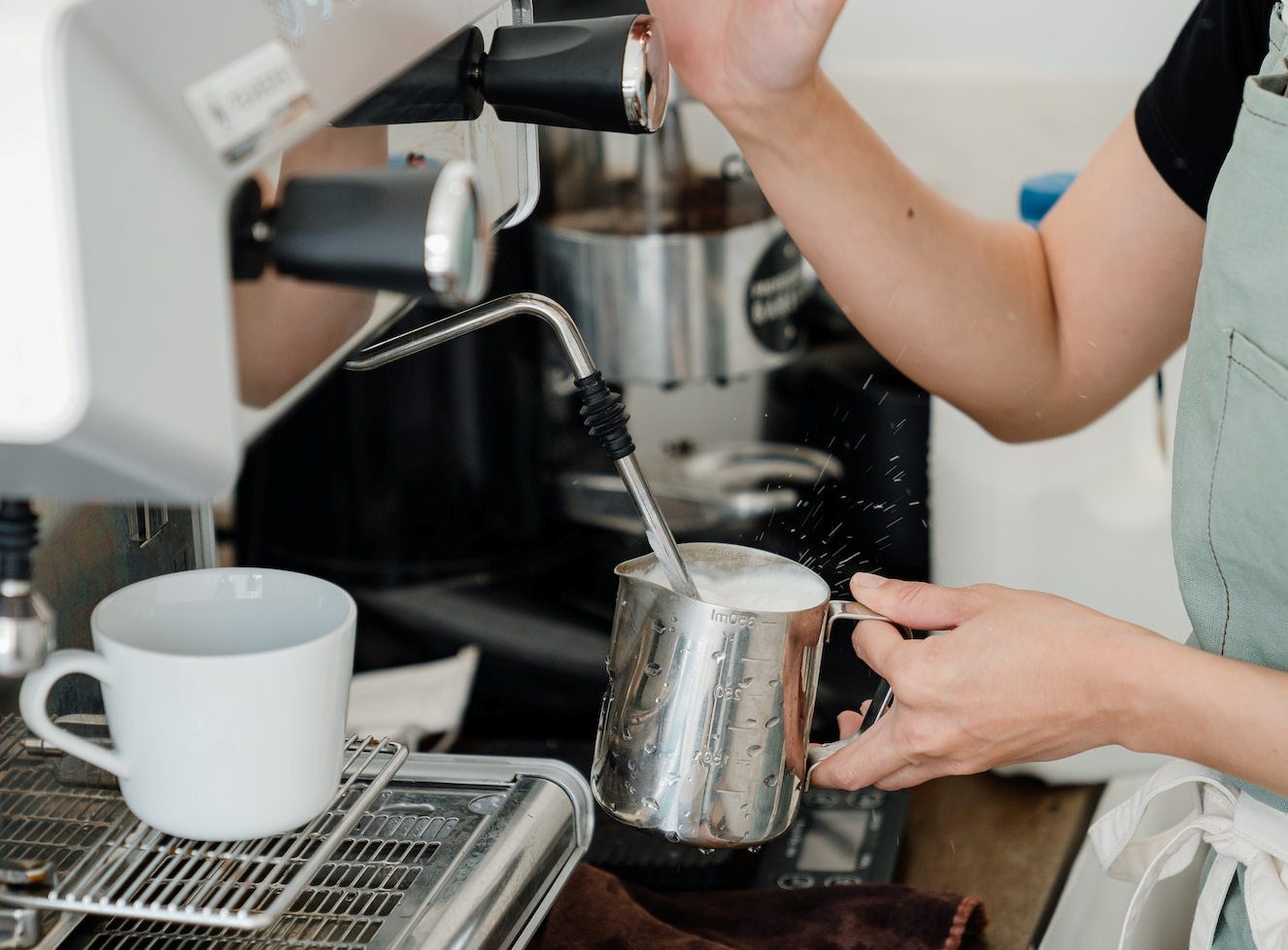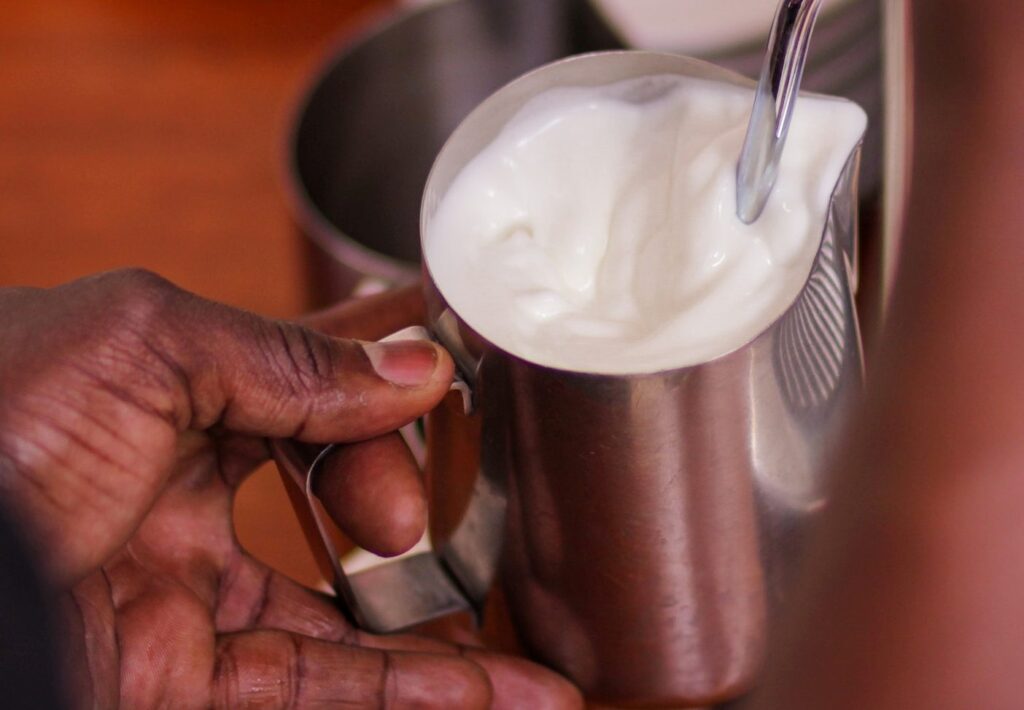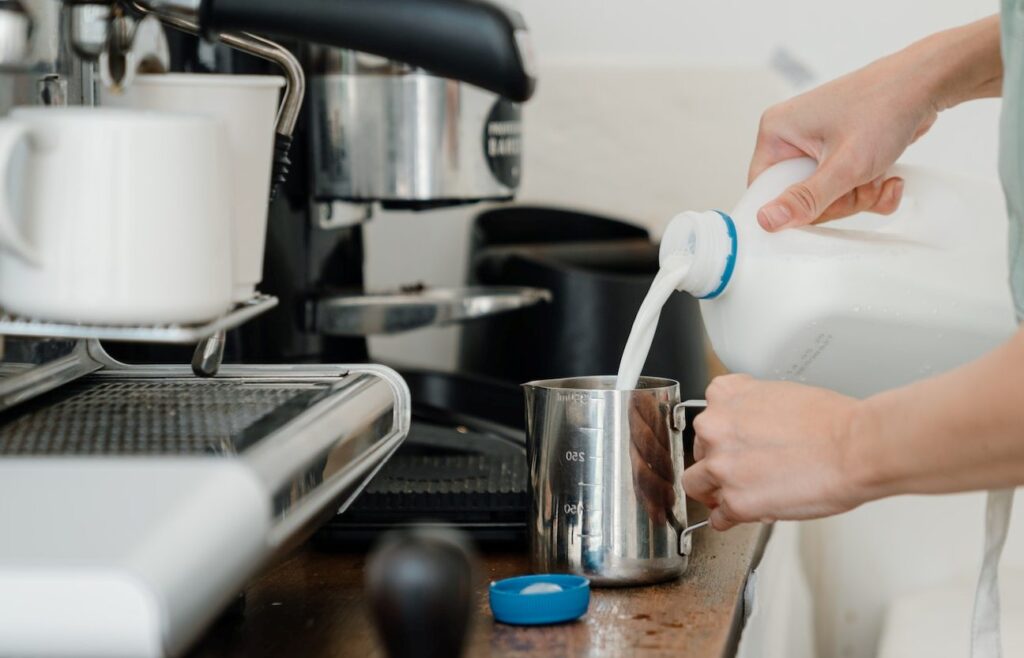
Everywhere in the world, milk and coffee have been combined for decades. Our modern way of life, which includes a wide variety of inventive coffee drink recipes, reflects the diversity and high caliber of our way of life. Whatever the coffee drink recipe, whipped cream or milky froth might be the ideal garnish, whether it is served cold or hot. There is something to be said for pairing milk and cream with the brew to prepare a perfect coffee latte, whether you want your coffee robust and dark, cool and creamy, or white and frothy.
Milk makes it different.

While a good cup of coffee should be consumed black, without milk, sugar, or other flavorings, milk is undoubtedly the ideal complement and is consumed by millions of coffee drinkers every day for having the Perfect Coffee Latte
Preparing your perfect cream for Perfect Coffee Latte

Modern coffee concoctions like frothy cappuccinos and hot lattes, which are prepared from a variety of all milk types, ranging from creams down the milk fat scale to roughly 1 percent and skim milk, require the dairy component to be completed. There are various schools of thought on the best kind of milk to use during frothing. A new espresso language has emerged as a result of these milk variations, which vary in terms of the amount, quality, and style of milk used in the drinks.
Choosing Good Types of Milk
Whether the milk is whole, low-fat, or fat-free, it can all be steamed, but the flavor and texture may vary. Low-fat milks make a lot of foam, but they sometimes have a dry, crisp texture. Full-fat milks will be smooth and creamy but may produce less foam. Even non-dairy milks like lactose-free, almond, hazelnut, and soy milk will foam and steam. Although rice milk does not make a lot of foam, those who are allergic to nuts can use it as a substitute. Some of these milks appear to heat more quickly than dairy products, and the froth may also be less stable or smooth.
STEAMING your milk

The first piece of advice is to do better. Practice using more milk than you would likely need to make your drink. This allows you to do experiments before the temperature rises to an unsafe level and you must stop. The best place to start is with a one-liter pitcher half-filled with milk, provided that your machine’s steam wand can reach the milk’s surface. Any smaller than this can be challenging because the milk heats up too quickly for you to become acclimated to how it moves and how quickly you should add air.
Preparing the steamed milk
Steamed milk has been cooked by the use of steam or another heat source to a temperature just below boiling. There isn’t much aeration or pumping of hot air into the milk, therefore the volume of the milk stays the same and there isn’t much foam.
Frothed Milk Preparation
Milk that has been foamed or frothed has been heated and aerated by having hot steam sprayed onto the surface of the milk. As a result, the milk acquires the right consistency of extremely light whipped cream thanks to a micro-foam of tiny air bubbles.
How to make the ideal steamed milk: a detailed step-by-step guide to prepare a Perfect Coffee Latte

- You should first Utilize a steaming pitcher with a tiny taper at the top since the milk needs space to swirl and foam up without spilling. Start by filling the pitcher no more than halfway with cool, fresh milk. Try to remove any remaining milk or water from your steam arm so that nothing but fresh steam emerges. Wrap a designated cloth around the steam nozzle to capture any water to prevent expected spilling. To prevent burning your fingertips, take care to keep them away from the nozzle.
- Hold the pitcher straight and level. Place the steam arm at an angle within the pitcher, just off-center but not touching the sides. The nozzle needs to be barely submerged. Don’t be afraid to turn it up really loud. If you don’t apply enough steam pressure, no bubbles will form and the milk will shriek loudly. Place your left hand at the steam pitcher’s base.
- The milk should be pushed in a circular motion by the direction of the steam pressure. Attempt to slurp for a little bit longer. Foam functions as a sound buffer and dampens noise as it grows. The bubbles become smaller as the noise decreases, resulting in a denser, better foam.
- The air is cut off as the milk expands and rises beyond the nozzle as it warms. Lower the pitcher so that the nozzle stays at the surface if you want lots of foam. To generate a smoother, denser foam, keep the liquid whirling and beat the large bubbles into smaller bubbles.
Now follow these three step wisely
- Only incorporate air while the milk is still cold. when you notice that the pitcher’s base has warmed to 37 C, or body temperature. You should have enough time to produce as much foam as you’d want if you add air as soon as the steam is on.
- Continue swirling the milk until you can’t touch the bottom of the pitcher. Give the procedure five more seconds, then remove your left hand and turn off the steam. If you hear a loud, rumbling sound, the milk is boiling and will taste eggy, which is not what you want in your coffee.
- Place the pitcher to one side. To remove any remaining milk from the inside of the steam wand, wipe it down with a moist cloth and purge for 7 seconds into the cloth. To rupture them, lightly tap the jug against the counter. When the large bubbles cease, stir the milk in the pitcher until it has a glossy, lustrous texture from both the milk and the foam. Swirl once more in a circular motion to finish.
You can avoid using a spoon to remove the foam by swirling the milk to keep the two components combined up until the point where you pour it into your cup. With some practice, this will become second nature. you will also be able to create great latte art.
A classic cup of cappuccino
Espresso is typically paired with two types of hot milk that have been steamed and frothed to make cappuccinos. Thirds espresso, thirds steamed milk, and thirds frothed milk make up the traditional recipe.
Your preferred cup of latte “the Perfect Coffee Latte”
One part espresso and two or three parts steaming milk are the ingredients for this traditional Italian breakfast beverage. Do not froth the milk.






